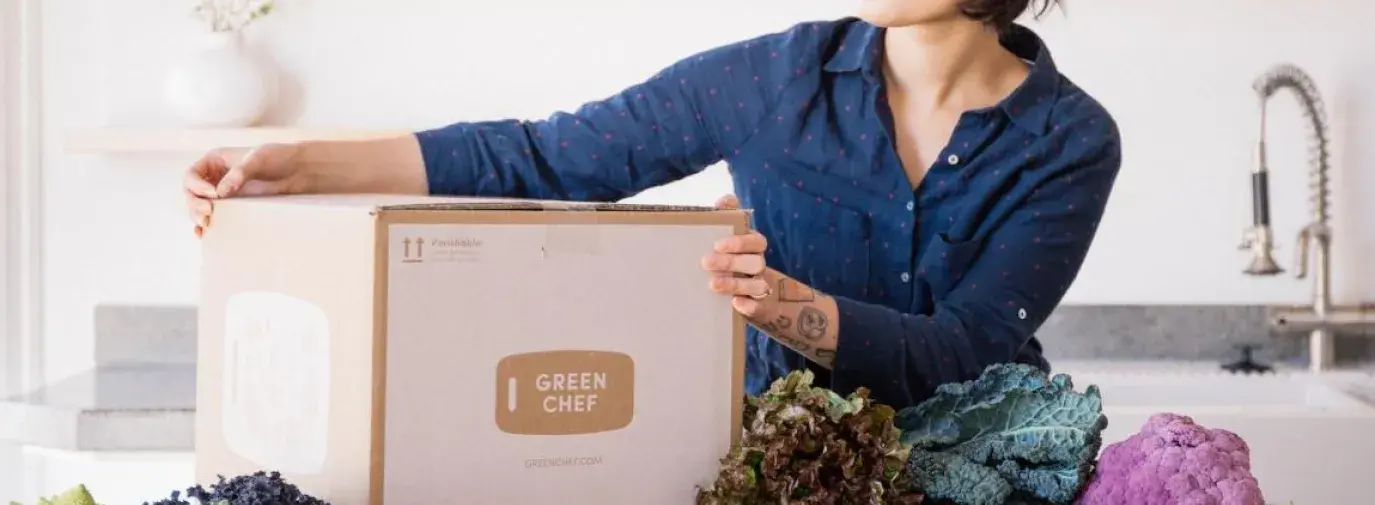
Are you expecting a delivery? Mail-order meal kits are popping up everywhere, maybe even on your doorstep. Blue Apron and Hello Fresh might be the ones you’ve heard of, but there are dozens of similar plans out there.
The insulated boxes they deliver include enough goodies to quickly whip up a meal for two or four, and there’s no denying the childlike excitement of opening one up to see portioned, sometimes prepped, ingredients along with recipe cards, based on your dietary needs and preferences. Depending on the service, these kits cost from $8 to $12 per serving, which is cheaper than a typical meal of takeout or at a restaurant.
The meal-kit industry is growing fast: At the beginning of 2016, a market-research study by Technomic estimated that Americans alone, who then made up 40 percent of the $1 billion industry globally, would grow to become a multi-billion-dollar market share.
In the past year, Martha Stewart has come out with her branded box with Marley Spoon. Amazon has partnered with Tyson to create Tyson Taste Makers. The New York Times has its box, Chef’d, and in August, Whole Foods announced it would be entering the ring as well.
The perks are there — you don’t need to shop or plan, you don’t need to buy ingredients you’ll never use again, and there often isn’t much food waste at meal-time, since everything is perfectly portioned. Companies also claim these boxes cut down on overeating.
But does this model cut back on overall waste?
There haven’t been outside studies done yet, but a report Blue Apron released in August, comparing its food waste to that of grocery stores. Grocery stores waste 10.5 percent of food at the retail level, meaning the amount of food on the shelves that never makes it to a customer. In contrast, Blue Apron says it wastes 5.5 percent. Grocery store shoppers toss almost 24 percent of their food after buying it, while customers waste 7.6 percent of Blue Apron-sent ingredients.
The report doesn’t paint the entire picture when it comes to meal kits’ environmental impacts. Across the board, meal-kit customers have to deal with a lot of packaging. Each ingredient generally comes in a separate bag, plus the box, with its liners and plastic-wrapped ice packs. Some of the materials may be recyclable, and with some services, made of post-consumer waste.
It just depends on how much work you want to do to recycle them. Some items, like cardboard boxes, can be recycled in most residential areas, while others, like plastic baggies and insulating ice packs, need to be broken into composite parts or routed into a specialty recycling program.
Nick Taranto, the CEO of one mealkit company, Plated, told Fast Company that his goal is to make his company completely carbon-neutral, and it has already switched some packaging to recycled and renewable plant-based products. But it’s not easy.
“The challenge is that customers want perfect-looking ingredients with no packaging,” Taranto told the magazine. “This is, unfortunately, not realistic.”
Tristram Stuart thinks that food-box delivery has a lot of potential. He’s a British food waste expert, author, and activist. What he likes about the model is that a company can be certain of its demand on any given day or week, and need not waste food on displays. (For example, grocery stores usually carry much more produce than they can sell in order to make an inviting display.)
Stuart also likes that Blue Apron has measured its waste and reported on it, an action he sees few other companies taking.
Although he is “dissatisfied” with the amount of single-use plastic packaging meal kits use, Stuart does think the model may become more streamlined in the future, because of how specifically meal-kit companies can know their customers’ needs each week.
“Maybe it’s redundant for us to use our cars and our legs to go into supermarkets when delivery vans can come to our dwellings,” he says. “I personally am very excited for the potential for that different retail interface, and one of the reasons why … is that you can tackle food waste in that way.”
Whichever way you slice it, meal delivery kits have pros and cons.
Overall: Watch for Labor Issues
Since the meal-kit industry is growing rapidly, things are changing fast — and workers may suffer as a result. Be on the lookout for notices about workplace exploitation with your favored provider.
For example, Buzzfeed released an investigative report in October about the conditions inside Blue Apron’s largest warehouse, in Richmond, CA. The company has boomed in the past two years, going from 50 to 1,000 employees sorting ingredients and packing boxes for shipment at this refrigerated warehouse. In that time, it has been cited by OSHA for workplace safety violations like bad electrical wiring and icy freezer floors. Workers described the warehouse environment as “aggressive” and “cold as hell.” Police have been called for multiple bomb threats and reports of assault on premises. Blue Apron told Buzzfeed it has been working to address all of the violations and safety concerns.
Good Options
• Use whatever service you already have, and pressure them to reuse and recycle everything possible. Most sites we looked at (11 services) had at least some information about how to recycle each shipping or storage material.
• Find a local meal-kit provider,so your food doesn’t have to travel so far. Just Add Cooking sources from New England producers and delivers to the Boston area. Happy Food Company sources primarily from Missouri, Kansas, Nebraska, and Minnesota, and sells in grocery stores around Kansas City, KS. Peach Dish sources from Georgia and the Southeast, delivers nationally.
• Choose one that donates meals to food-insecure families. One Potato donates a meal for every box ordered. It has provided job training to the unemployed in Los Angeles.
Better Choices
• Look for companies offering organic options. If you’re not buying organic, you may be getting a delivery of genetically modified organisms and pesticides packed up in your dinner.
Green Chef, for example, is a certified organic business, and 95 percent of the ingredients that it ships are certified organic, as well. Sun Basket, Terra’s Kitchen, and One Potato base their meal kits on organic products.
• Vegetarian and vegan meal kits contribute to animal welfare and generate fewer carbon emissions associated with meat. Purple Carrot offers vegan-only food to entice non-vegans into learning how to cook more healthy and sustainably. Green Chef also has vegan boxes. And Green Chef, Hello Fresh, Blue Apron, Sun Basket, One Potato, Terra’s Kitchen, and Peach Dish all have vegetarianboxes.
• Top of the heap: Green Chef, Sun Basket, One Potato, Purple Carrot, and Terra’s Kitchen use recycled packaging and offer organic and vegan/vegetarian meal-kit options.
Best Bets
• Subscribe to a CSA (community supported agriculture) produce delivery to support local farmers and cut down on packaging and price. Some CSA providers offer recipes as well. Find one at localharvest.org.
• Sign up for weekly recipes, available from many cooking sites. Whole Foods is one grocery store offering free meal plans. Select your food preferences and local grocery store at TheDinnerDaily.com, and it will send you a shopping list and menu for dinners for the week, including coupons for your store. The service costs $4-$6/month, depending on for how long you sign up.
• Buy things that won’t spoil in bulk, like dry and canned goods.
• Start a dinner co-op in your neighborhood, where a group of households take turns cooking for each other. You’ll get to taste different types of foods, save money, and build community. Get tips on how to start one in Green America’s article, “Cook One Meal, Eat for a Week.”







